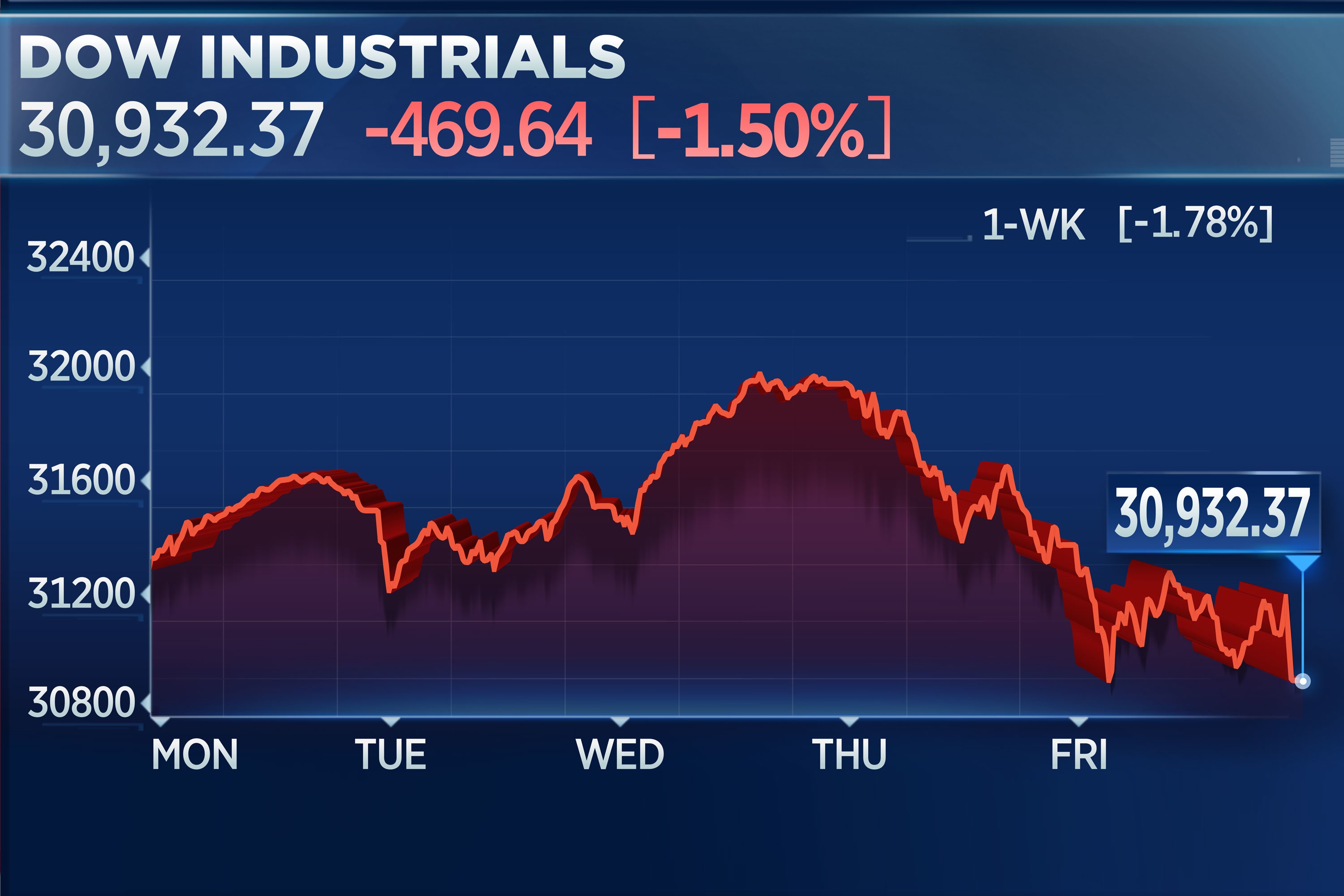
The Dow Jones Industrial Average swung wildly Friday to close near its session low as Wall Street struggled to shake off fears of rapidly rising rates.
The blue-chip benchmark ended the volatile session 469.64 points, or 1.5%, to 30,932.37 after trading in the green earlier. The S&P 500 fell 0.5% to 3,811.15 as energy and financial stocks pulled back. The Nasdaq Composite ended the day 0.6% higher at 13,192.34 as Big Tech names rebounded after a large sell-off in the previous session amid surging bond yields. Facebook, Microsoft and Amazon each rose more than 1%. The tech-heavy benchmark gyrated in Friday’s session where it jumped 1.9% at its high and fell as much as 0.7%.
All three major averages posted weekly losses as fears of higher interest rates and inflation deepened. The S&P 500 slid 2.5% this week for its second negative week in a row. The 30-stock Dow fell 1.8%, and the Nasdaq was the relative underperformer this week, losing 4.9%.
The weakness in the broader market came even after the personal consumption expenditures price index indicated subdued inflation in January. The PCE index, which the Federal Reserve watches closely, rose 0.3% for the month, slightly ahead of the 0.2% expectation but was up just 1.5% year over year, matching Dow Jones estimates.
The 10-year Treasury yield fell 10 basis points to around 1.42% Friday, after surging above 1.6% at one point on Thursday. Treasury yields initially fell following the inflation data release, but they bounced higher, triggering the intraday slump in major indexes. Even as they ended the day much lower, stocks failed to shake off the fears that higher rates may halt the equity rally.
“Despite the unruly nature of the treasury sell-off yesterday, credit spreads remained contained, but if spreads widen materially and a sell off ensues, the Fed — and markets — will really have something to worry about,” said Quincy Krosby, Prudential Financial’s chief market strategist.
Popping interest rates alarmed equity investors and pushed the Nasdaq Composite to its worst session since October a day earlier. The 10-year rate is up more than 50 basis points since the year began, a sharp rise for a bond rate used as a benchmark for mortgage rates and auto loans.
Despite this week’s weakness, the equity benchmarks all finished February with modest gains. The S&P 500 and the Dow climbed 2.6% and 3.2%, respectively, posting their third positive month in four. The tech-heavy benchmark gained 0.9% this month.
Economists and investment managers say the bond market is reacting to positive economics as vaccines are rolled out and GDP forecasts improve, which should benefit corporate profits. But the move could also signal faster-than-expected inflation ahead.
“If the market begins to believe that the Fed has somehow lost control of where the bond market is going, all that idea of a taper tantrum will show up,” Art Cashin, director of floor operations at UBS, said Friday on CNBC’s “Squawk on the Street.”
The sheer pace of the rise has also had the effect of dampening investors’ appetite for richly valued areas of the market. Higher rates reduce the value of future cash flows so they can have the effect have compressing equity valuations. Thursday’s jump in the 10-year yield also put it above the S&P 500′s dividend yield, meaning that equities — which are considered riskier assets — have lost that fixed-payment premium over bonds.
Investors are shifting money into so-called reopening trades, buying the stock of companies that would benefit most from the vaccine rollout and a return to regular travel and dining trends.
Energy gained 4.3% this week, bringing its February gains to more than 21%. Energy is the biggest winner by far amid expectations that consumers around the world will soon be driving and flying as they were prior to the Covid-19 pandemic. Financials also jumped 11.4% this month, benefitting from rising interest rates.
— CNBC’s Kevin Stankiewicz contributed reporting.
Subscribe to CNBC PRO for exclusive insights and analysis, and live business day programming from around the world.




